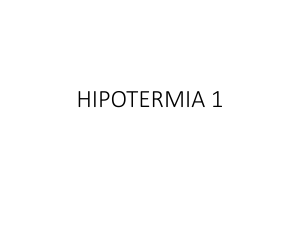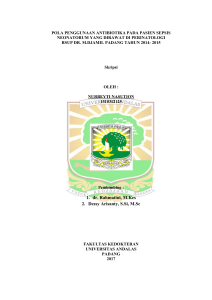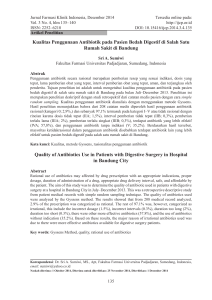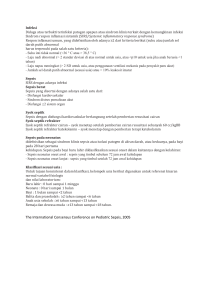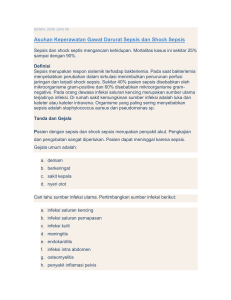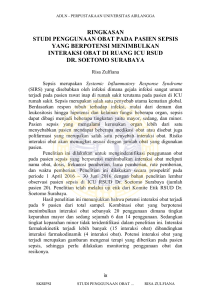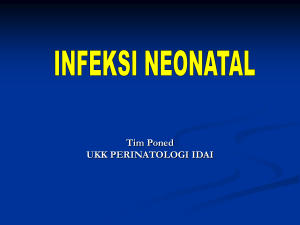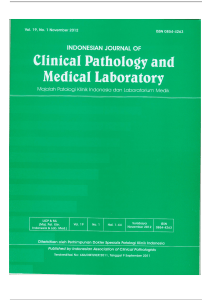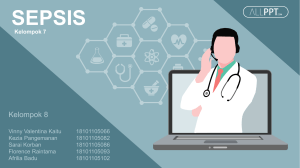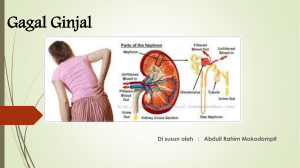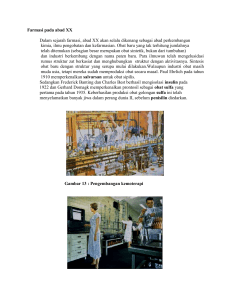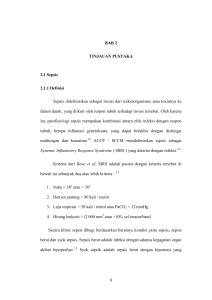evaluasi kualitas penggunaan antibiotik pada pasien sepsis di
advertisement
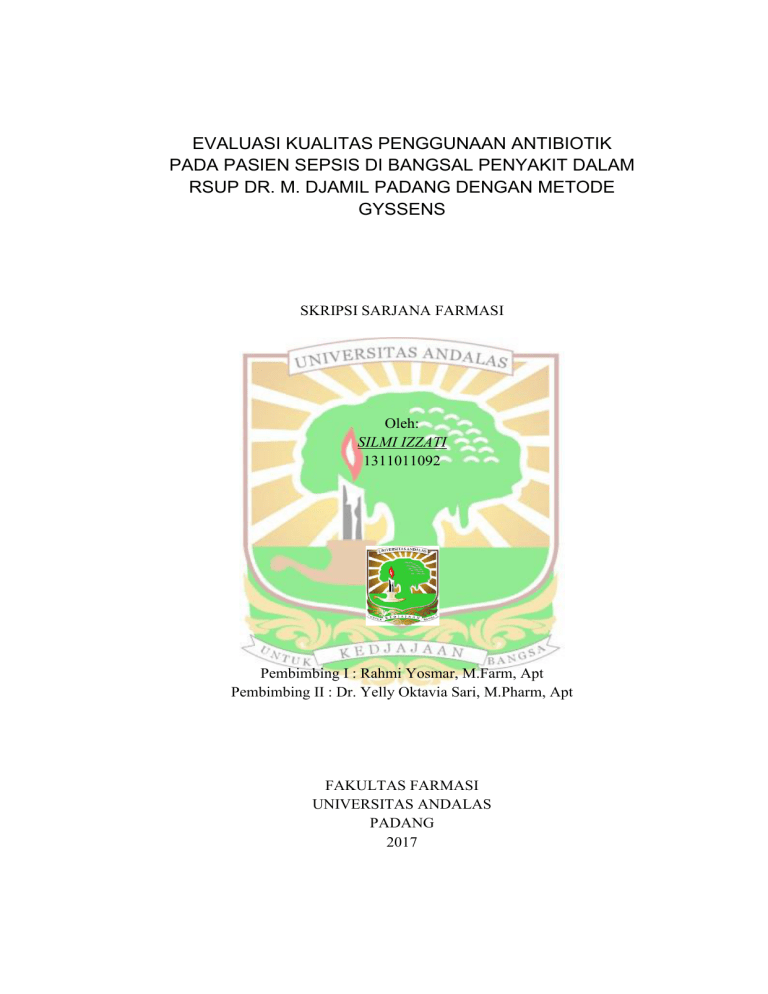
EVALUASI KUALITAS PENGGUNAAN ANTIBIOTIK PADA PASIEN SEPSIS DI BANGSAL PENYAKIT DALAM RSUP DR. M. DJAMIL PADANG DENGAN METODE GYSSENS SKRIPSI SARJANA FARMASI Oleh: SILMI IZZATI 1311011092 Pembimbing I : Rahmi Yosmar, M.Farm, Apt Pembimbing II : Dr. Yelly Oktavia Sari, M.Pharm, Apt FAKULTAS FARMASI UNIVERSITAS ANDALAS PADANG 2017 ABSTRAK Sepsis merupakan sindrom respon inflamasi sistemik yang disebabkan oleh infeksi. Secara global insiden sepsis mengalami peningkatan dengan angka kematian yang terus bertambah. Antibiotik yang digunakan secara tepat dinilai dapat menurunkan angka kematian pada sepsis. Tujuan dari penelitian ini adalah untuk mengevaluasi penggunaan antibiotik pada pasien sepsis di Bangsal Penyakit Dalam RSUP Dr. M. Djamil Padang secara kualitatif. Penelitian ini adalah penelitian deskriptif evaluatif dan pengambilan data dilakukan secara retrospektif. Penelitian dilakukan dengan melihat rekam medik pasien yang mendapat terapi antibiotik yang dirawat di bangsal penyakit dalam selama bulan Maret 2016 sampai dengan bulan Desember 2016. Di antara 70 pasien, 25 orang diantaranya berjenis kelamin laki-laki (35,7%) dan 45 orang lainnya berjenis kelamin perempuan (64,3%). Rentang usia tertinggi terdapat pada usia 45-64 tahun sebanyak (48,57%). Jenis antibiotik yang paling banyak digunakan adalah sefoperazon (26,6%), kemudian levofloksasin (22,6%), meropenem (14,61%), dan siprofloksasin (13,3%). Hasil evaluasi kualitatif menurut kategori Gyssens menunjukkan 60% penggunaan antibiotik tepat (kategori 0). Sebanyak 12,8% dosis tidak tepat (kategori IIA), 1,4% interval tidak tepat (kategori IIB), 5,7% pemberian terlalu lama (kategori IIIA), 4,3 pemberian terlalu singkat (kategori IIIB) dan 15,7% tidak tepat karena ada alternatif lain yang lebih efektif (kategori IVA). vi ABSTRAK Sepsis is a systemic inflamatory response syndrome caused infection. Globally, the incidence of sepsis increased the number of deaths continues to grow. Antibiotics are used appropriately rated to reduce mortality in sepsis. The aim of this study was to evaluate the use of antibiotics on sepsis patients in the internal medicine ward Dr. M. Djamil Padang hospital were evaluated qualitative. Descriptive evaluative study was used to assess antibiotics use and data collection was done retrospective. The study was conducted by reviewing medication records of patients who received antibiotic therapy during hospitalization in the internal medicine from March 2016 to December 2016. Among the 70 patients, 25 of them were male (35,7%) and 35 others were female (64,3%). Maximum number of patient fell under age range 45-64 years (41,43%). The type of antibiotic most widely used is cefoperazon (26,6%), then levofloxacin (22,6%), meropenem (14,6%), and ciprofoxacin (13,3%). The highest comobidity was broncopneumonia. Qualitative evaluation results by gyssens category was found 60% antibiotic use was rational (category 0). A total of 12,8% of doses were not appropriate (category IIA), 1,4% of interval were not appropriate (category IIB), 5,7% antibiotic therapy was too long (category IIIA), 4,3% antibiotic therapy was too short (category IIIB), and 15,7% irrational because have alternative more effective (category IVA). vii
